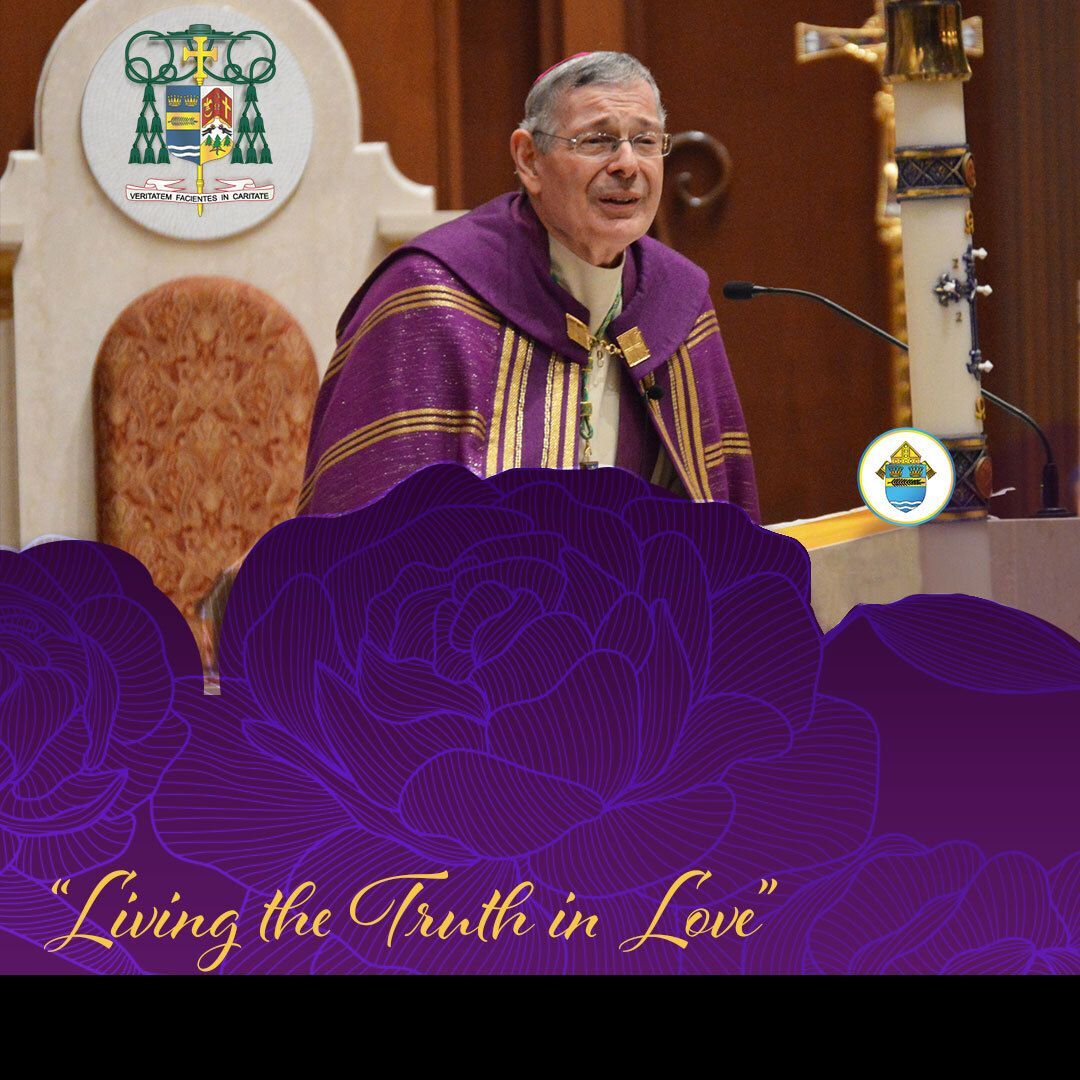
Mary — Our Hope Who Never Disappoints
On March 19, we celebrated a very important feast in the life of the Church, the Solemnity of St. Joseph, husband of Mary. On March 25, we celebrated another important feast in the life of the Church, the Solemnity of the Annunciation. Both of the celebrations fall during the season of Lent, and it is significant that they transcend the Lenten liturgies, which means they are celebrated with their own readings, white vestments and the proclamation of the Gloria. These solemnities remind us of the centrality of Mary within the life of the Church, as well as within each of our individual lives.
The Solemnity of St. Joseph, husband of Mary, honors the singular role of St. Joseph in the lives of Jesus and Mary. While all of the saints speak to us of holiness from different backgrounds and stages of life, which inspires us in our own lives and circumstances, Mary stands as the apex of what holiness is all about. If we could speak of a hierarchy among the saints, Mary stands at the top of the list. St. Joseph points to this in a particular manner. His role is unique within the Church because he is the husband of Mary, who supported her in raising Jesus as his foster son. However, his role was secondary to Mary’s. The Catechism of the Catholic Church clearly states that the role of Mary in the life of the Church stands above the role of the apostles and even that of St. Peter. Their role was a functional one in assisting the Church to arrive at holiness. However, Mary’s role is one of the model of holiness for the Church. Mary lived her whole life in a perfect manner. She possessed all of the virtues that St. Joseph, her husband, did, but in a perfect manner because she was free from original sin.
The Solemnity of St. Joseph also reminds us of the centrality of family, as given to us by God. God is the perfect family, the Father, the Son and the Holy Spirit. He created us in His image and His likeness, which means He created us as signs of His love within the Trinity. How much we need the example of family life today. The Holy Family stands as a model of what that life is all about. Mary, as a perfect mother, gave herself to Jesus so that His human life might be as complete as possible as He carried out His divine mission. Joseph was her associate in this mission as well. Mary, through her Assumption, body and soul into heaven, possesses a unique relationship with the life of the Trinity, almost as if complementing that life in union with the humanity of her Son.
As we celebrated the Solemnity of the Annunciation, we realized how unique Mary is in the life of Jesus in His human nature. Jesus was conceived in the womb of the Virgin Mary. All of the human genetics of Jesus are from the Virgin Mary. While Joseph assisted her in the raising of Jesus in His human nature, none of Joseph’s genetics are part Christ’s human nature. In fact, there is no other human person who contributed to the human genetics of Jesus — only the Virgin Mary. That is why St. John Paul II used to frequently remind us that Mary is present at the Eucharist in a unique manner since the Body and Blood of Jesus are from the body and blood of Mary. We can certainly say that, in Mary alone, God took our human nature to Himself, and so while the divine person of Jesus existed in the womb of Mary, the human nature of Jesus now exists in the Trinity, and that is because of the special role of Mary.
The Annunciation also reminds us of the sacredness of each and every human life, which comes into existence from the moment of conception. As Mary said yes to the angel’s invitation from God, the Son of God became incarnate in her womb at that very moment. As we continue to do all we can to protect the life of an unborn child, which is in so many ways threatened in our society today, Mary’s conception of Jesus stands before us at the Annunciation in a vivid manner.
This year we are celebrating the Jubilee Year of Hope as proclaimed by our Holy Father, Pope Francis. The theme for this year is taken from the Letter of St. Paul to the Romans, “Hope does not disappoint” (5:5). Mary is the model of hope because she never doubted that what God promised her would not come about. Hope faces difficulties and challenges, as did the hope of Mary so often in her life, especially at the foot of the Cross. However, hope never despairs, even when those setbacks are so great, because God has promised what He promises in His Son will come to fulfillment. Mary was the only one under the Cross, feeling the bitter pain of that Cross, who never lost hope. St. Peter ran to the empty tomb on Easter Sunday with fear and doubt. Mary did not have to be there as her hope was fulfilled.
As we continue to celebrate this season of Lent, may Mary stand before us as a model of the centrality of life. She is the perfect human person. She is the saint among saints. Saints are saints because they followed her and prayed to her. She represents what Christ has redeemed in all of us in a perfect manner. She was conceived without sin and remained without sin. She had all the experiences of human life, including suffering, but always knew that God was with her, in whom she trusted completely.
Our world today is looking for heroes. So many people today wish to take on the role of hero. Many times, our young people are not seeking to be the unique person that God created them to be, but to be famous and celebrities in the eyes of others. Mary is the perfect hero in every regard. However, she never sought nor desired such a role. She simply was the person God made her to be and reveals to us what the meaning of life is all about.
May we know the joy that Mary brings to us as our Mother and model in this life. Mary is our hope as she will never disappoint.
O Mary conceived without sin, pray for us who have recourse to thee!
Most Reverend Gerald M. Barbarito

